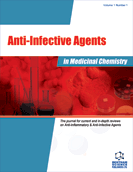Abstract
Helminth parasitic diseases are mainly controlled by anthelmintic treatments, but control schemes are now threatened by the large development of anthelmintic resistance. Integrated parasite management needs to be developed but processes underpinning parasite population dynamics and resistant gene evolution are still lacking. Here, we review the mathematical models that have been developed to understand the evolution of anthelmintic resistance in host-helminth parasite models (intestinal helminth parasites of herbivores and human soil-transmitted helminths). A first part is dedicated to generic models that allowed the understanding of processes underlying host-helminth parasite models: the identification of factors responsible for epidemiological patterns observed (i.e. persistence, aggregated distribution, density-dependence regulations) and the consequences of these factors on resistance gene evolution. In a second part, we review mathematical models developed to investigate alternative management strategies, based on a rational use of anthelmintics with the aim of both controlling parasite infection and maintaining resistance gene frequency at low levels. As a conclusion, key factors that should be incorporated in mathematical models to investigate the efficiency of management strategies are discussed.
Keywords: Population dynamics, anthelmintic resistance, helminth, mathematical models, integrated parasite management
 9
9





















